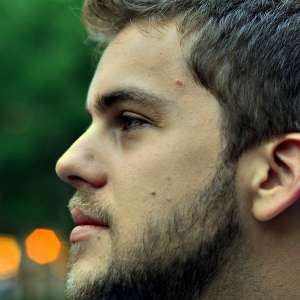The Nutcracker is as familiar as holiday leftovers. Even in years when you decide to forgo seemingly obligatory performances of The Nutcracker, The Messiah, and other ‘seasonal’ works, you can’t escape hearing snippets of the music in shopping malls, elevators, or cell phone ring tones. Tchaikovksy's ballet adapts E.T.A. Hoffmann's classic tale of a young girl, Clara, who falls asleep on Christmas Eve and is whisked away to a dreamland of sugar plum fairies and dancing flowers.
Few performances of The Nutcracker elevate the work to the level of art, though the production by the American Repertory Ballet should be commended for reaching new generations of performers and audiences. A significant part of the company’s work and mission is in conjunction with the Princeton Ballet School, the students of which were integral to the cast. There’s a saying among theatre professionals that “You’ll always be upstaged by children or anything with four legs.” Certainly, the charming children from the School stole the show in their 49th revival of The Nutcracker.
Training children can be difficult, and working with them in the rehearsal room for professional productions even more so. Combining these challenges with multiple casts of children in the same production adds another layer of complexity. Yet, the students of the Princeton Ballet School were all naturals on stage.
Arts education in America lacks funding, and children grow up often without ever seeing live performances, let alone participating in them. That the American Repertory Ballet provides opportunities for children to take part in large-scale productions such as The Nutcracker makes it almost unique among arts organizations: the School is one of the few dance programs for young people associated with a professional company. Because dance is one of the first areas of arts education to be cut during budget deficits, the work that the American Repertory Ballet does to educate youth should serve as a model for other dance companies through the nation.
While many of the professional company members in The Nutcracker wowed the audience, the stand-out performer by far was Alexander Dutko. His first appearance on stage was in Act I as the Toy Cavalier Doll. Though playing a mechanical doll, an archetype found in several operas and ballets, his movement never came across as caricature. Instead, one became immediately aware of his grace as a ballerino.
Later, Dutko reappeared as the Cavalier in Act II, a perfect foil to the highly stylized movement of the Toy Cavalier in Act I. The Cavalier stood out even above the Sugar Plum Fairy in their pas de deux near the end of the act. The tarantella which followed, a solo for the Cavalier, allowed him to display his poise and virtuosity, leaving audiences to wonder what he could achieve with even more difficult choreography.
In addition to admirable spinal support and core strength, Dutko’s facial expressions were finely attuned to the emotional character of the music. Many dancers, including many of Dutko’s colleagues on stage, have only two facial expressions – torment and gladness. He, however, used more subtle, relaxed expressions that did not detract from himself or his partner in the pas de deux.
The major criticism of the performance is the use of recorded music. While many dance companies cannot afford the expense of live music, particularly a Tchaikovsky-sized orchestra, the American Repertory Ballet boasts that it uses live music during rehearsals. It was often difficult to see the dancers – both professional and students – truly listening to the music, and not just dancing to the music.
The recording used (which, incidentally, was not credited in the program) was not edited well, and abrupt stops during cuts or between tracks were unsettling. If the American Repertory Ballet wants to save money by using a recording, they should consider investing in a good sound designer to help make these transitions more smooth and professional.
All in all, the production provided for a charming afternoon, and can serve as a welcome side dish to holiday turkeys for local families.


